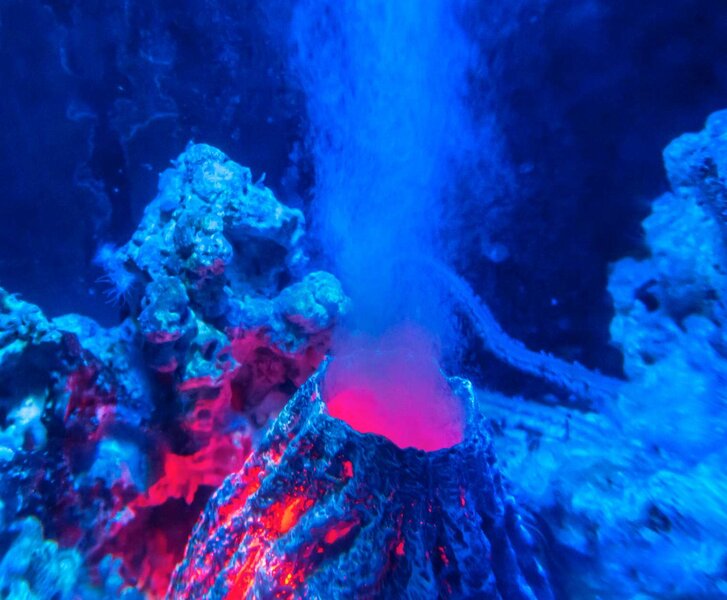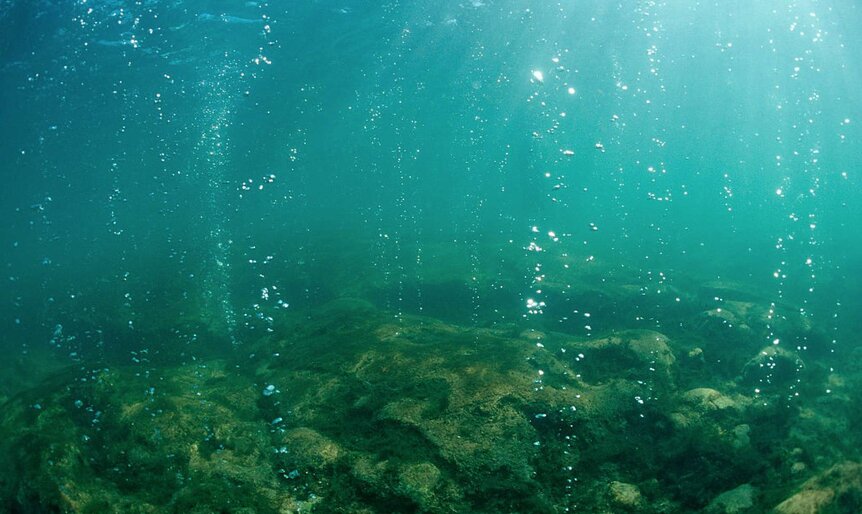Create a free profile to get unlimited access to exclusive videos, sweepstakes, and more!
Could underwater volcano power deliver energy needs for the entire U.S.?

Fortified with the Earth-shuddering force of volcano power, a new research paper believes there’s enough energy produced by underwater eruptions to provide juice for the entire U.S. These deep ocean rifts are constantly spewing out heat and venting material from deep within the Earth’s crust. However, actually harnessing this raging power source might be an extremely difficult endeavor.
Underwater volcanoes not only eject ash into the surrounding water like their above-ground counterparts, but also produce intense cyclones of superheated water called megaplumes that could easily top off roughly 40 million Olympic-sized swimming pools.
Scientists have long been captivated by the notion of oceanic megaplumes and their fathomless origins, especially when it comes to theories on how humanity could possibly plug into this naturally occurring engine. There has been nominal research into seafloor volcanic activity and taming its geothermal energy, but these megaplume events are far too infrequent and remote to offer any substantial amount of information to further develop understanding of their dynamics.
But according to a study published last week in Nature Communications, volcanologists Sam Pegler and David Ferguson of the University of Leeds employed both direct observations and mathematical computations to navigate around the fact that there’s such an absence of data. To formulate their hypothesis, scientists tapped into data collected by other researchers who examined the Northeast Pacific’s Northern Escanaba (NESCA) lava flow back in 2009.
Per their research, the NESCA vent heats up seawater into violent torrents that can whisk volcanic rock particles called “tephra” up to three miles away from the eruption site. This method enabled Pegler and Ferguson to devise a simulation which can estimate the magnitude of these volcanic tantrums.
“Our results constrain the rate of energy release (or power) and show that during the eruption the power output is sufficient to run the U.S. for that period of time, probably on the order of hours/days (however long it lasts—we don’t know precisely)," Ferguson told Vice. “I would say there is effectively zero chance of capturing the energy for all sorts of reasons, such as we don’t know when or where the eruptions will happen, very tricky to access, etc. The point of the comparison was really just to illustrate how powerful/energetic these things are.”
An interesting side note of their investigations revolves around considerations of just how megaplumes could influence the dispersion of organic life into surrounding currents.
“Extremophile life in the deep ocean is sustained (in the complete absence of sunlight and other nutrients) by the energy and chemicals supplied by magmatic and volcanic activity,” Ferguson added. “In addition to finding unexpected forms of life around seafloor hydrothermal vents (aka black smokers), scientists have also discovered diverse microbiomes within the solid oceanic crust itself.
“The most likely mechanism that these thermophilic (heat-loving) microbes are dispersed to other sites is in megaplumes. Our results suggest that this process is likely to be mediated by volcanic activity. There is also the interesting conjecture that many biologists consider deep sea hydrothermal systems as good candidates for the origin of life on Earth.”
The Leeds team also concluded that volatile megaplumes are likely not entirely sourced via molten lava erupting out of deep splits in the seafloor, and might be reinforced by boiling pockets of vented fluid within Earth’s crust that blast into the escaping surge.
“Our result suggests that these eruptions involve huge transfer of heat to the ocean, and that much of it may be sourced from the rapid venting of heated subsurface fluids,” Ferguson said. "Future studies may reveal the role of volcanic gases in this heat output, the relationship between the vent sites and the eruptions, and how the tephra are incorporated into the megaplumes.
“Hopefully future in situ observations of deep sea eruptions will advance our understanding” of the many outstanding questions about these super-powered events.”




























